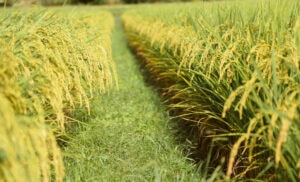Sparkling sake
Japanese sake has been gaining popularity worldwide in recent years. For a better understanding of the different Sake categories we explain here what is behind the term Sparkling Sake.
What is Sparkling Sake
Sparkling sake (スパークリング酒) is a sake that contains carbon dioxide. Due to its low alcohol content and sweet taste, Sparkling Sake is also an interesting introduction for newcomers to the subject of "Nihonshu".
Three production methods for Sparkling Sake
Sparkling sake can be divided into three types depending on the production process, which we briefly explain here:
Kassei Nigori
Alcoholic fermentation, which is necessary for the production of sake, produces both alcohol and carbon dioxide. As a result, even the normal sake that is not Sparkling Sake bubbles slightly immediately after the mash is pressed. Normally, the carbon dioxide disappears through a process called hi-ire (pasteurization).
The term "Kassel Nigori" (活性濁り) means "active turbidity". In this type, the sake is not pasteurized. After fermentation is almost complete, the mash is filtered through a coarse cloth before bottling. Because of the coarse filtration, there are still solids in the liquid and the color of the sake is white and cloudy. Since the yeast is still alive and fermenting in the bottle, carbon dioxide gas is produced.
Secondary bottle fermentation
This variant of sake is also not pasteurized. Before the fermentation process is completely finished, the mash is pressed and bottled. Active yeast remains in the pressed liquid, which continues to ferment in the bottle and produce carbon dioxide. Incidentally, this is the same method used to produce sparkling wine or champagne.
A new trend in Sparkling Sake - Awa Sake
While many breweries are developing and offering new sparkling sake products to tap into new demand for sake, there is also an initiative to establish clear quality standards to ensure healthy market expansion. One representative of this initiative is the Awasake Association. By 2022, there will be 28 member breweries throughout Japan.
"Awa" (泡) stands for "foam". "Awa-Sake" is therefore a special name for Sparkling Sake. To be allowed to bear the name Awa-Sake (or "Awazake"), it must be a transparent sake made from carefully selected rice, Kōji and water, with a natural foam from the second fermentation in the bottle. It must also meet strict quality standards and pass inspections by external auditors before it can be certified as Awa sake.
Carbon dioxide injection process
This type of Sparkling Sake is made by artificially adding carbon dioxide to the finished sake. This is a relatively inexpensive method of producing Sparkling Sake. The quality is relatively stable and can be stored at room temperature. For this reason, it is often sold in supermarkets and convenience stores in Japan.
How does Sparkling Sake taste
Special features of sparkling sake are mainly its fruity taste. It often has a low alcohol content, with 5 - 7 % vol. However, there are also higher percentage bottled with 11 - 15 % vol.
As a rule, the higher the alcohol content, the drier the taste. In the Kassei-Nigori variant, more of the rice flavor remains, so it is milder and creamier. For this sake, we recommend using a slim ceramic jar, as the residue will stick to the glass.
All types of Sparkling Sake should be served chilled. For the clear Sparkling Sake varieties, we recommend using champagne glasses or champagne flutes.
More about the individual steps of sake production you will learn here.
More about Japanese cuisine?
All about sake www.sushiya.de/sake

Which types of rice are suitable for sake production?
Although you can see Japanese Sake can basically brew from all types of rice, there are, of course, special rice varieties that are best suited for fine sake - and beyond that, some special rice varieties that differ from their edible rice counterparts in structure and characteristics. Here we give an insight into the special rice varieties for the Sake making.
Dassai
The world of many different types of sake is also complex for foreigners because the brand name is often not the company name.

Rice - central raw material for sake production
To a bottle Sake Junmai category, you need about 1.8 kg of rice - for a Junmai Daiginjō sake, it is already 3 to 3.5 kg of rice as a starting point, since less of the original rice remains here due to the higher degree of polishing.
No wonder that the rice used is of special importance. Here we explain everything about rice as a raw material for sake production.



